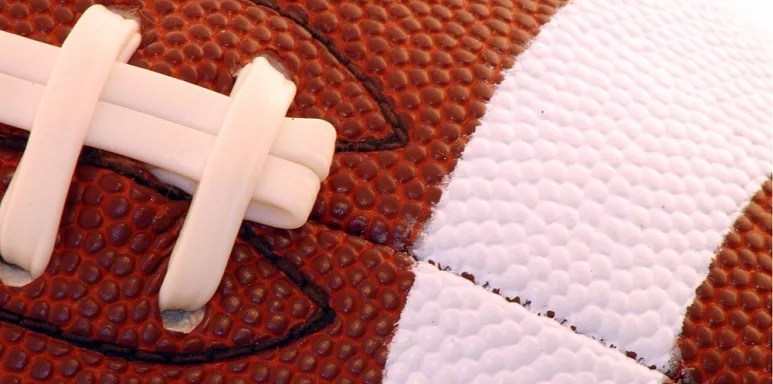Most live sports on TV, with the exception of esports, have all but come to a halt during this tenuous era marked by COVID-19. But ESPN hopes to bring spirits up beginning tonight during its first ever virtual NFL draft.
In a combined broadcast with NFL Network, the 2020 draft that was supposed to take place in Las Vegas will now be run remotely, with NFL Commissioner Roger Goodell announcing draft picks from his house. While a limited number of staffers will be working out of ESPN’s studios in Bristol, Connecticut—using proper protocol by the CDC and guidance from the governor—everyone else, including NFL teams and prospective picks, will be participating from their homes.
Adapting to a New Reality
The massive feat is nothing short of extraordinary, with the ESPN production crew working around the clock to conduct tests and ensuring all necessary locations are equipped with the proper technology before the draft kicks off tonight. A separate broadcast on ABC will also take place the first two days of the draft.
“This is the most complicated event I personally have ever been involved in,” said ESPN Vice President of Production Seth Markman during a media conference call last week. Markman has been with the network for 27 years. “The coordination that it’s taking, and the magnitude of the event, the amount of feeds that are coming in, the technology we’re trying to use, all preparing for this [without face-to-face meetings with our employees] … It’s just been complicated and we’re adding the joint broadcast, and producing the ABC broadcast at ESPN’s headquarters as well.”
“We all feel a special responsibility to do a spectacular, as best we can, meaningful draft for so many people. It’s that special responsibility that is driving everybody right now,” added Mark Quenzel, NFL Network’s senior vice president of programming and production.
Making it Work, Remotely
This year, on-site personnel will be broken up into two control rooms with a limit of seven to each room (down from the usual 20 in one room), all of whom will be masked except for the on-air talent. All 58 draft prospects spread out across the country will be joining the telecast via Wi-Fi, along with team general managers and coaches, additional team personnel and special guests. Special tributes will also be part of the daily coverage. Approximately 180 various feeds will be sent through video call centers that then route to ESPN in batches to make it more manageable for the staff receiving them. “The number of potential things you could do at any given moment, the number of assets, number of sources, is mind boggling, so we are trying to make sure we can streamline all of that into Bristol— into ESPN,” said Quenzel.
The crew sent hardware to all who would be participating in the show from their homes, with self-installation instructions. Remote technology support is being provided, though assistance will be deployed to an individual’s home if requested and if necessary, with strict protocols in place to protect the safety of all parties involved. ESPN has also been helping home participants coordinate with their cable providers to make sure they have the right bandwidth to support their participation in the broadcast.
Involving the Fans
The fans’ reactions, which have always made the draft the entertaining spectacle that it is, will be more challenging to incorporate this year. Markman said the production team has looked at a bunch of different ways that fans can be involved, including sending in their videos to be aired during the broadcast when appropriate. “We can’t replicate what Nashville had last year … We know we can do a great job analyzing the players, but the energy and the fans—we’re never going to be able to replicate,” said Markman.
Learning for the Future
The production team is taking the opportunity to learn from this experience to enhance future storytelling coverage and viewership satisfaction. Now that many of the network’s talent have cameras installed in their homes, Markman said in the future, amid breaking news, there’s the possibility that ESPN could get more faces and voices on TV almost instantly instead of relying on phone calls like it has in the past. “That’s one of the good things that I hope will come from this, also how we’ve all learned and adjusted to use different virtual technologies to replace in-person meetings to communicate with each other. I don’t think those will go away,” said Markman.
ESPN is known for providing live coverage, facts, and top-notch analysis of sporting events around the world, but what sets it apart has always been its dedication to in-depth storytelling. Markman highlighted during the conference that each athlete’s unique journey and road to being drafted will be spotlighted. In fact, the staff had already collected and produced 70 vignettes that tell the back stories of the prospective draft picks.
Acknowledging the Times
On top of their technology and storytelling efforts, the ESPN team aims to set a particular tone with the broadcast that goes beyond the draft—a tone unlike any other it has ever established. Markman said above all, the chief goal behind this year’s event is to put into context the current global situation by acknowledging the tragic and heroic moments behind the crisis, and to recognize the people on the frontlines who battle COVID-19 every day. “We know the draft will hopefully provide a distraction or some type of compelling content for people to see,” said Quenzel, in agreement with Markman. “But [it’s important to acknowledge] there’s a much bigger environment out there. And how do we [go about] communicating that and weaving that into the broadcast as an important element of giving back, and [convey an] understanding that we are all in a much larger thing together. That, to me, will be the biggest factor in success.”








